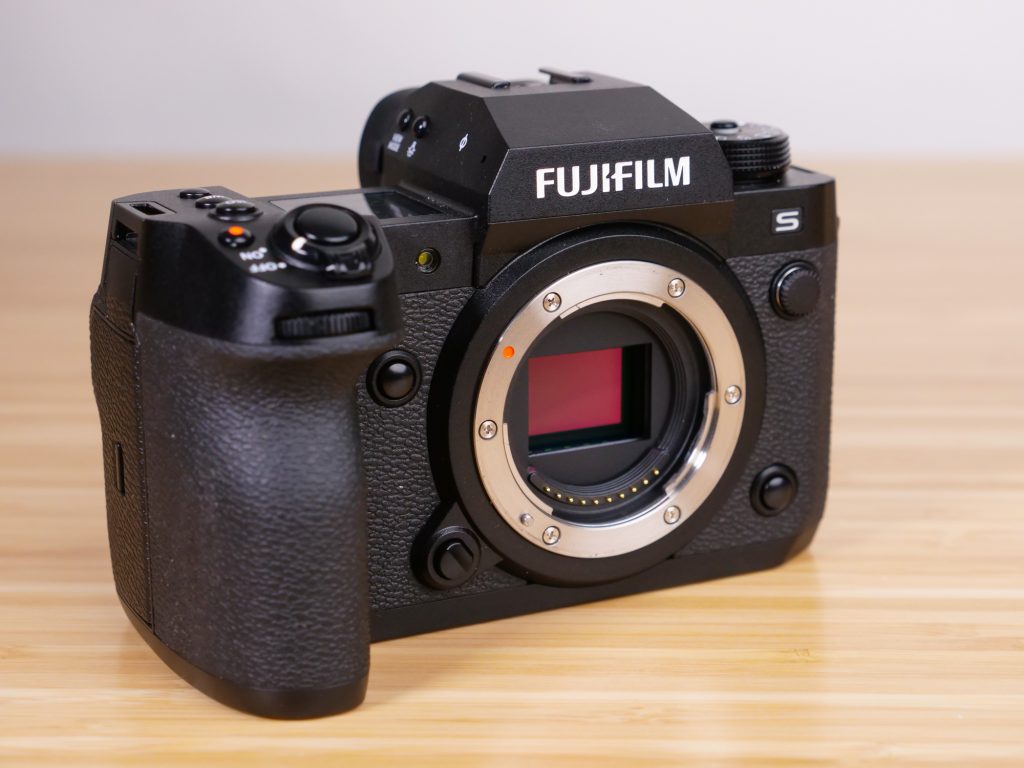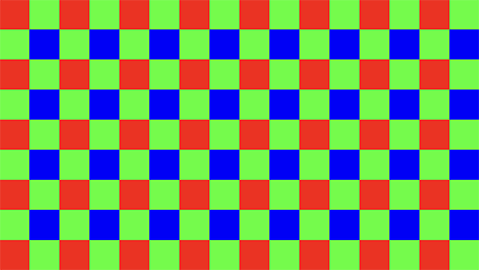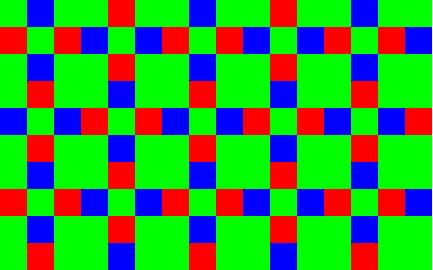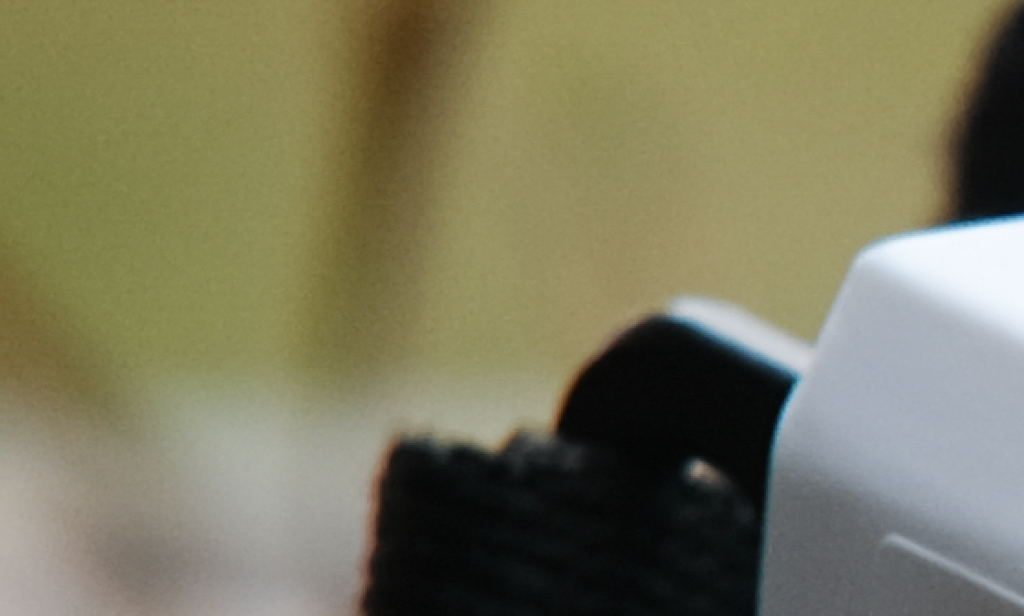Fuji’s X series of cameras use the X-Trans camera sensor rather than the Bayer sensor used in most other cameras. In this article, we will explain the difference between the X-Trans and Bayer sensors and discuss how the X-Trans sensor will affect the pictures or video you take with your Fuji camera.
Background

The X-Trans camera sensor was developed by Fujifilm and is only used on Fuji X series cameras. There are several versions of the sensor, with the newest being the X-Trans 5 HS and HR sensors released in 2022. Although the technology was developed by Fuji and is only used in Fuji cameras, the sensors are manufactured by Sony. All current X-Trans sensors are APS-C size.
The sensor is a critical part of the camera, as it is the component that detects light and converts it into an electrical signal that can be processed by the camera to create a digital image. It determines the megapixel count of the camera, as well as its light-gathering capability, noise level, color reproduction, and more.
While the sensor is not the only component that impacts the colors, functionality, and “look” of a camera, it plays a large role. Since Fuji cameras use the X-Trans sensor instead of the more common Bayer sensor, the strengths and weaknesses of the X-Trans sensor could be an important part of your decision to use a Fuji camera or a camera from another brand.
Technical Differences Between X-Trans and Bayer
The primary difference between X-Trans and Bayer is in the photosite layout of the sensors. A photosite is a single square block on a camera sensor that can detect light of a certain color. Every camera sensor consists of a grid of photosites that detect the primary colors (red, green, and blue). When the grid of photosites is exposed to light, each photosite detects a certain color, and the information from all of the photosites is combined to form an image, in a process known as demosaicing.
Camera sensors typically contain more green photosites than red or blue. This is because the human eye is more sensitive to green light, so the luminance (brightness) of an image is calculated from the greens in the image.


In a standard Bayer sensor, each row of photosites on the sensor consists of green photosites alternating with either red or blue photosites. As you can see from the diagram, this results in a repeating pattern, which can cause interference when the sensor layout lines up with a repeating pattern in the image. If you’ve ever taken a picture of a striped design and noticed a strange effect in the image (known as moire), you’re seeing this interference.
On the other hand, the Fuji X-Trans sensor contains a more random arrangement of photosites. You can see from the diagram that while the sensor still contains green, red, and blue photosites, the X-Trans layout is more randomized than the Bayer layout. Fuji claims that this random layout minimizes moire and other interference effects.
X-Trans Sensor Image Characteristics
The difference in layout between the X-Trans and Bayer sensors results in a few differences in image characteristics between the two sensors.
Color Cast
X-Trans images tend to appear more green than Bayer images. This is due to the increased concentration of green photosites on the X-Trans sensor. This is minor, and easily corrected, but you may want to be aware of it if you need to color-match images or footage between X-Trans and Bayer cameras.
Moiré
Fuji claims that because the photosite layout on the X-Trans sensor is more random than on the Bayer sensor, moiré effects are less likely to occur. While this seems logical, we’re unsure of how true it is in practical use. In our own shooting with Fuji cameras, we have certainly still seen moiré in some situations. It’s possible the moiré is less pronounced or likely on X-Trans sensors, but don’t expect the X-Trans sensor to completely eliminate the possibility of moiré effects.
Sharpness
X-Trans sensors do not include a low-pass filter (also known as an anti-aliasing filter), which is used on Bayer sensors to reduce moire and interference effects. Because low-pass filters slightly reduce the sharpness of the image before it reaches the camera sensor, X-Trans sensors are capable of more apparent resolution and sharpness than Bayer sensors.
Fuji claims that this causes their APS-C size X-Trans sensors to be competitive in resolution with some full-frame Bayer sensors. While this is a difficult claim to measure, the science supports the claim that an X-Trans sensor should be slightly sharper than a Bayer sensor of the same resolution.
Noise
The noise performance on X-Trans sensors tends to be different from that of Bayer sensors. It’s difficult to objectively describe the difference in noise, but many shooters feel that the noise from X-Trans sensors is more pleasing and “filmic” than that of Bayer sensors.
Micro-Contrast
Because luminance information in an image comes from the green photosites, and because the X-Trans sensor has larger contiguous blocks of the green photosites, it is able to more precisely represent luminance changes across the image. This theoretically results in more micro-contrast in the image, resulting in a more accurate image than what a Bayer sensor can produce.
Editing X-Trans Images
One key issue to be aware of with images from an X-Trans sensor is how various image editing applications handle the raw files from the sensor.
When you take a photo or video and the sensor sees the image, the camera has to convert data from the red, green, and blue photosites into a correct-looking image that looks like what we see in real life. This process is known as demosaicing, and must be handled differently for X-Trans and Bayer sensors due to the different photosite layouts.
The camera will handle this for you if you are shooting .JPG images, but if you are shooting raw images to do more in-depth editing, your image editing or raw processing software has to perform the demosaicing process. Unfortunately, not all editing software handles X-Trans raw files properly.
One notable software that doesn’t handle X-Trans files correctly is Adobe Lightroom. If you process raw files from a Fuji X series camera in Lightroom, you’ll notice that as you increase sharpess in the image, you’ll see a “worming” effect in the noise, which isn’t a natural or pleasing look. This is due to Lightroom not demosaicing the X-Trans image properly. Whether the effect will be apparent in your images depends on the image and how you are editing it, but you may notice this issue if you inspect the image closely.


There are a few solutions to this problem. You can use a tool such as Irident X-Transformer to demosaic the raw files and convert them into .DNG files, which Lightroom can read properly with no issues. You could use Fuji’s own raw processing utility to process the raws into .JPG files. Or you could use a different editing application, such as CaptureOne, which does handle X-Trans raw images properly.
Is X-Trans Better Than Bayer?
Even with all of the differences between the X-Trans and Bayer sensors, it’s difficult to say which sensor is better. Many Fuji shooters feel that they can notice and appreciate the characteristics of the X-Trans sensor, such as the noise pattern and increased micro-contrast. On the other hand, X-Trans is less common than Bayer, meaning that editing software such as Lightroom doesn’t have as much support for X-Trans files.
And in many cases, the differences in the sensors may be more theoretical than practical. Do X-Trans sensors really have more apparently sharpness and resolution than Bayer sensors? Is the noise really more “filmic”? It’s hard to determine how much these factors really translate to the images you capture with your camera, especially because there is no true one-to-one comparison between the sensor types. While Fuji cameras are set apart by their X-Trans sensors, they also have different color processing algorithms than cameras using Bayer sensors. This makes it hard to truly say whether the X-Trans sensor is what sets Fuji cameras apart from their competition.
In short, the X-Trans sensor is a key part of the Fuji X series of cameras, and it’s useful to understand how the sensor design affects the images you take. Knowing the strengths of the X-Trans sensor may help you identify why you like or don’t like images from Fuji cameras. In some cases, it may help you understand behavior differences you see with a Fuji camera, such as decreased moire or unexpected noise patterns when editing raw files in Lightroom. The sensor is also only one part of the camera system, and shouldn’t be your only factor in choosing a camera, although it is an important part of the system.